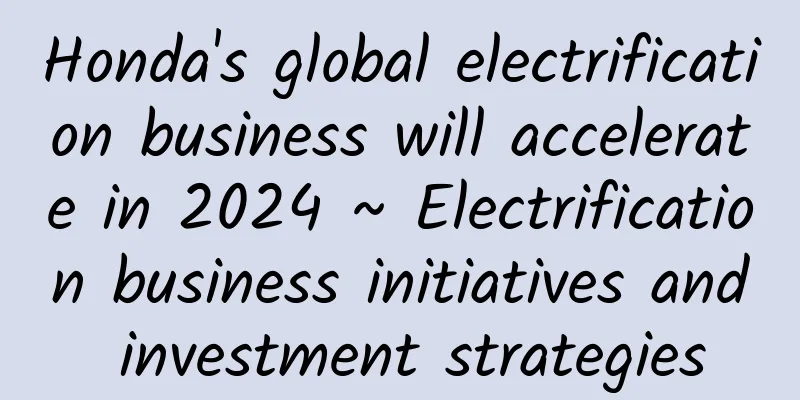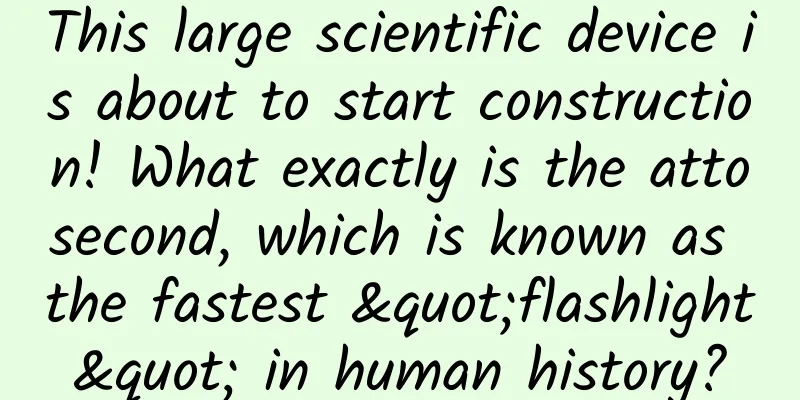Honda's global electrification business will accelerate in 2024 ~ Electrification business initiatives and investment strategies

|
On May 16, 2024, Honda held a press conference mainly focusing on various business initiatives in automotive electrification, and President and Representative Executive Officer Toshihiro Mibe attended the event. 1. Honda's electrification promotion ideas and measures As the electrification market environment undergoes drastic changes, some regions have pointed out that the current pure electric vehicle market has slowed down. However, there should be a variety of solutions for Honda's "carbon neutrality by 2050" vision. Among them, in order to achieve zero environmental impact of mobile tools, various fields need to think and respond in a diversified manner. For example, large mobile tools such as airplanes and ships are expected to adopt sustainable aviation fuel※1 or synthetic fuel ideas and methods from the perspective of endurance. However, in the field of small-sized mobility tools such as two-wheelers and cars, Honda still regards pure electric vehicles as the most effective solution. From a long-term perspective, we believe that the transformation to pure electric vehicles will continue to advance steadily. We will not be overly entangled in the current situation changes, but will focus on the pure electric vehicle popularization period that will come in the second half of the 2020s, and build a strong pure electric vehicle brand and business foundation from a medium- to long-term perspective. According to Honda's plan, by 2030, pure electric vehicles and fuel cell vehicles will account for 40% of global sales, and the annual production of pure electric vehicles will reach more than 2 million. With this goal in mind, we will take the following measures: 1 Launching pure electric models with Honda's unique charm 2. Build a comprehensive value chain of pure electric vehicles with batteries as the core 3 Promote the optimization and upgrading of production technology and factories We will choose the right time to make investment decisions and steadily advance the above three points, striving to achieve a 5% operating profit margin (ROS) in the pure electric business by 2030. We will further work to improve the profit margin with the goal of achieving self-sufficiency in the pure electric vehicle business. 1-1. Launch of pure electric models with Honda's unique charm As a new pure electric vehicle series, the "Honda 0 Series" plays an important role in Honda's pure electric vehicle strategy. It adopts the new pure electric vehicle research and development concept of "Thin, Light, and Wise." It was built from scratch. At CES in January this year, Honda released two concept models, "SALOON" and "SPACE-HUB". Among them, SALOON will be officially launched as a flagship model in 2026, and its mass-produced car will be very close to this concept. ■Thin It aims to provide space value that combines superior driving performance and comfort, so that Honda's long-standing "M·M concept" can be fully reflected in the era of pure electric vehicles. ・ The new large and medium-sized pure electric vehicle dedicated platform and upgraded power unit are adopted, thus achieving a unique low body shape and short overhang layout among pure electric models. ・ The newly developed small e-Axle and the industry's best ultra-thin battery pack have been adopted, making the motor compartment and floor thinner. In addition, Honda's own collision control technology and a body frame that combines design and functionality have been adopted on the basis of optimizing the layout of parts and reducing the number of parts. Through various technologies accumulated by Honda in the field of automobile manufacturing over a long period of time, a low body shape and a spacious and comfortable cabin space have been achieved at the same time. In addition, it also has a user interface that facilitates intuitive recognition and a clear field of vision, aiming to create an in-car space that makes driving more enjoyable. ■“Light” Pursuing a light and smooth driving experience, it provides the "driving pleasure" that Honda has always pursued in car manufacturing. ・ In addition to the lightweight body frame, Honda also created a new power unit with lightweight and slim characteristics based on the technology accumulated in international automobile competitions and hybrid vehicle development. The body weight is reduced by 100kg compared with the previous generation model. ・ Place heavier components such as the battery and power unit lower in the center of the vehicle to lower the center of gravity, making the vehicle's ride smoother and providing a brisk and smooth driving experience ・ To achieve the driver's desired control experience, Honda adopted posture control technology accumulated in the development of independent robot technology. ・ Combining a highly efficient power unit developed specifically for racing with advanced aerodynamics technology, it provides a unique, light and smooth driving experience, achieves industry-leading power consumption performance, and enables each model to have a range of more than 300 miles※2 ■“Wise” Equipped with Honda's self-developed vehicle operating system and further upgraded with intelligent network technology, it can provide every customer with a high-quality digital experience. In addition, it can be continuously upgraded through OTA, evolving into a charming product with unique Honda characteristics. ・ The underlying electrical and electronic architecture, the upper vehicle operating system, and the installed applications are all developed independently. The SoC semiconductors used are also specially customized, for example, to achieve automation and intelligent upgrades, while adopting indispensable AI technology and trying to reduce power consumption. ・ Models planned for release in the late 2020s will adopt a central architecture, which integrates multiple ECUs that control vehicle systems individually into a core ECU that serves as the brain of the entire vehicle. Through the synergy of various functions, innovative emotional experiences can be provided in a timely manner, and the vehicle will continue to be endowed with intelligence, enabling it to meet the user's personal preferences and needs in detail. ・ The AD (autonomous driving) and ADAS (advanced driver assistance system) are designed to provide users with a seamless mobile travel experience from getting on the car to getting off the car, not only during the driving process, but also through the application of more advanced sensing technology and intelligent technologies such as AI, making the system closer to human perception. ・ In terms of driving assistance technology, the world's first L3 autonomous driving technology will be used. In addition to improving the speed response range on highways, the range of autonomous driving assistance response on ordinary roads will be further expanded. From calling the vehicle to parking, users will continue to be provided with a coherent driving assistance experience, creating a load-free "joy of free movement". 1-2. Building a comprehensive value chain for pure electric vehicles with batteries as the core We will focus on the core components of pure electric vehicles - batteries with core competitiveness, and build the corresponding value chain in stages from a long-term perspective to ensure a high level of competitiveness. ■The dawn of pure electric vehicles: early 2020s In the field of liquid lithium-ion batteries, Honda will strengthen cooperation with external companies in various regions to ensure that it can purchase the required number of batteries in a stable manner while controlling costs. ■Transition period to pure electric vehicles: mid-2020s The company will start joint venture production of batteries with partner companies. In the US market, the battery factory jointly established with LG Energy Solution will start production in 2025, with an annual battery production of 40GWh. By establishing a solid value chain with the largest partner in North America, competitive battery costs will be achieved. In addition, the lightweight and compact battery pack produced using high-density packaging technology will be used in the "Honda 0 Series" to enhance product competitiveness. At the same time, our business areas will also expand from automobile production to full life cycle business areas such as charging services, energy services, secondary utilization and recycling, and further consolidate the cornerstone of our business by expanding the scope of independent operations. ■Pure electric vehicle popularization period: late 2020s and beyond We will further expand our business scope, from raw material procurement to vehicle production, and then to battery secondary use and recycling, and build a vertically integrated pure electric vehicle value chain with batteries as the core. In Canada, we will start independent production of battery products developed jointly with GS YUASA. Regarding the main components and materials, Honda will establish joint venture factories with POSCO Future M and Asahi Kasei Corporation in Canada, and each will carry out the production of positive electrode materials and separators. At the same time, Honda will also promote its independent production. In addition, we are also focusing on the secondary use of batteries. Through these efforts, we hope to reduce battery procurement costs in North America by more than 20% from current levels by 2030. In addition, we will ensure that each region can obtain the batteries it needs in the best way to meet the production plan of approximately 2 million pure electric vehicles. 1-3. Promote the optimization and upgrading of production technology and factories From now until the mid-2020s, when we are transitioning from traditional fuel vehicles to pure electric vehicles, in order to be able to flexibly respond to changes in market demand and environment and ensure profitability, we must make the best use of existing production equipment and carry out mixed production of traditional fuel vehicles and pure electric vehicles. In addition, we will actively introduce the advanced technologies required to achieve Thin, Light and Wise and promote them efficiently to ensure that we can build an efficient production system in our dedicated electric vehicle factories in the future. In terms of thin battery pack production lines, which are crucial to the production of pure electric vehicles, the new battery shell production line at the Anna Plant in Ohio, USA, will introduce a 6,000-ton high-pressure die-casting machine and a giant casting machine. This can greatly reduce the number of components and accessories of the battery shell, from a total of more than 60 to 5, and will be combined with friction stir welding (FSW) technology to reduce investment and improve production efficiency. We have now introduced Japan's first*3 6,000-ton-class giant casting machine to our production technology research base in Tochigi, and have begun mass production tests. This technology will be further developed in the future, for example by expanding its application to large aluminum die-cast body frame components. Honda's own "Flex Cell Production System" will be introduced first on the battery pack assembly line. This system can combine modular components with unit production methods according to the product functions of the vehicle, and flexibly respond to changes in the models produced and fluctuations in production. In addition, digital twins are used to reproduce the actual situation of the production line in real time in cyberspace to optimize production efficiency (including the supply of parts, production and speed of the factory) to ensure that products can be provided in a timely manner according to market demand. In the future, we will further expand the scope of application of these technologies. In addition to the battery pack production line, they will also be applied and deployed in all pure electric vehicle production lines. Ultimately, the project will be implemented in a dedicated electric vehicle factory in Canada, which will be put into operation in 2028. Including a significant increase in operating rate and reduction in fixed costs, we will strive to achieve a global high level of production efficiency, which will save about 35% of production costs compared to previous mixed-flow production lines. 2. Link real-time data to drive operational improvements In addition to product, procurement, and production-related initiatives, we will also use software to integrate the entire chain of operations from product planning to after-sales service and make comprehensive improvements. Based on Honda's concept of "software-defined car", it will make full use of real-time data to provide more considerate products and experience value to every user in all scenarios more efficiently. For example, data such as the latest market trends and customer preferences obtained at the sales site will be fed back to the development and production sites in real time, enabling us to provide innovative products that meet customer and market needs as quickly as possible. At the same time, real-time vehicle data obtained through the intelligent networking function will be linked to the service site, allowing us to plan the best service menu for customers and present it to customers in real time through Honda's dedicated application. In addition to the above applications, we will also link to the latest data at any time across the entire value chain to build an organic system that can respond quickly and flexibly to the rapid changes in the pure electric vehicle market. 3. Electric product line strategy To prepare for the popularization of pure electric vehicles in 2030, in the field of pure electric vehicles, we will focus on our main product, the Honda 0 series, and strategically launch products around the world. At the same time, we will further improve the performance of hybrid technology, which is currently performing strongly in the market, and expand our product lineup globally. The specific delivery plan is as follows: 【Pure electric vehicles】 ・ Global pure electric vehicle - "Honda 0 Series" The first model will be launched in the North American market in 2026, and seven models will be launched globally by 2030, covering large, medium and small models. ・ Chinese market Ten pure electric models will be launched before 2027, and by 2035, the sales proportion of pure electric vehicles will reach 100%. In addition to the e:N series that has been launched, the company will continue to expand its pure electric vehicle product lineup through the launch of the new pure electric vehicle brand "Ye". ・ Small electric vehicles In areas where there is market demand for small pure electric vehicles, relevant products are launched one after another In the fall of 2024, the light commercial pure electric vehicle "N-VAN e:" is expected to be launched in Japan. In 2025, the light passenger pure electric vehicle will be launched. In 2026, we will launch a small pure electric vehicle that highlights the fun of driving. [Promoting electrification using Honda Mobile Power Pack (replaceable battery)] ・In 2024, we will launch a two-wheeled electric product equipped with two replaceable batteries. ・In fiscal 2025, we will launch an ultra-compact mobile tool equipped with four replaceable batteries in the Japanese market. Hybrid vehicles ・ Upgrade Honda's two-motor hybrid system "e:HEV" and its platform. By making the e:HEV lightweight and more efficient, and the platform more efficient and shared, fuel consumption can be further reduced while still providing a satisfying driving experience. ・ Transfer the pure electric vehicle research and development technology to hybrid vehicles, and use the motors on pure electric vehicles to realize electric four-wheel drive. Compared with mechanical four-wheel drive, the maximum driving force of electric four-wheel drive is further improved, and high-response and high-precision driving force distribution control can be achieved. In addition, through coordinated control with the motion management system, the driving performance can be improved while stabilizing the vehicle, taking into account both safety and driving pleasure. In addition to providing these more advanced hybrid models to customers around the world, we will also ensure stable profits by strengthening our conventional fuel vehicle business, including hybrid vehicles, and invest the resulting funds in new businesses such as pure electric vehicles. 4. Financial strategy - ensuring resources are invested and strengthening capital allocation In order to realize the above electrification strategy, timely strategic investment is essential. Honda plans to invest about 10 trillion yen in resources in the 10 years before pure electric vehicles are fully popularized in fiscal 2030. The details are as follows: ・ R&D expenditure on software-defined cars: approximately 2 trillion yen ・ Investment and funding required to build a comprehensive value chain for electric vehicles in the United States, Canada, Japan, etc. Approximately 2 trillion yen ・Product manufacturing-related expenses such as the production area of the next-generation pure electric vehicle dedicated factory, two-wheel electrification-related expenses, new vehicle model R&D expenses, mold investment, etc., totaling approximately 6 trillion yen (R&D expenses 3 trillion yen, investment and capital contribution 3 trillion yen) When making investment decisions, we will evaluate the penetration of the pure electric vehicle market, observe the appropriate investment timing, and proceed flexibly. The cash generated will be used to deploy resources for future growth and return to shareholders. Honda's overall capital allocation plan is as follows. ■Fiscal Year 2021 to 2025 (Consolidating the business of traditional fuel vehicle products and investing resources in pure electric vehicle business) By strengthening our two-wheel business and conventional fuel vehicle/hybrid vehicle business, we will generate operating cash flow of 12 trillion yen. It will be used to invest in electric business, traditional fuel vehicles/hybrid vehicles and new fields, as well as stable and continuous dividends. In order to achieve a price-to-book ratio of more than 1 as soon as possible, Honda will strive to improve capital efficiency in the future, including optimizing the accumulated equity capital. In the four years from fiscal 2021 to fiscal 2024, Honda has repurchased 780 billion yen of shares. ■Fiscal Year 2026 to 2030 (Formal transformation from traditional fuel vehicles to pure electric vehicles) With the increase in second-wheel sales in emerging markets and other markets, the continuous improvement of the traditional fuel vehicle/hybrid vehicle business is expected to keep the operating cash flow at the same level as in the 2021-2025 fiscal year. In order to achieve the 5% operating return rate (ROS) target for pure electric vehicles, the operating cash flow will be increased by improving profitability and increasing sales, thereby striving to create cash flow that exceeds the 2021-2025 fiscal year. In terms of resource allocation, Honda will further accelerate its investment in electrification and software to promote the growth of pure electric vehicle business. At the same time, in terms of shareholder returns, we will continue to pay dividends steadily and flexibly obtain our own capital. In terms of dividends, Honda plans to pay dividends of more than 1.3 trillion yen in fiscal years 2021-2025 and more than 1.6 trillion yen in fiscal years 2026-2030. The plan shows Honda's determination to ensure stable and continuous dividends, and will never reduce dividends per share even if necessary forward-looking investments are made during the transformation period, resulting in short-term profit fluctuations. We will maximize cash generated from our established earnings base and new growth areas, investing decisively while focusing on returns to shareholders. ※ 1 Sustainable Aviation Fuel: Sustainable Aviation Fuel ※2 Values measured according to EPA (U.S. Environmental Protection Agency) standards ※3 Based on Honda's survey results As a winner of Toutiao's Qingyun Plan and Baijiahao's Bai+ Plan, the 2019 Baidu Digital Author of the Year, the Baijiahao's Most Popular Author in the Technology Field, the 2019 Sogou Technology and Culture Author, and the 2021 Baijiahao Quarterly Influential Creator, he has won many awards, including the 2013 Sohu Best Industry Media Person, the 2015 China New Media Entrepreneurship Competition Beijing Third Place, the 2015 Guangmang Experience Award, the 2015 China New Media Entrepreneurship Competition Finals Third Place, and the 2018 Baidu Dynamic Annual Powerful Celebrity. |
<<: Taxi-hailing apps are fighting again, this time for entry
>>: Sand mining may trigger new environmental crises and increase the risk of natural disasters
Recommend
Qun Xiang "IP Monetization Training Camp 5-6" has many industry insider operations, and we will personally teach you how to generate traffic
Qun Xiang "IP Monetization Training Camp 5-6...
Qualities of a Project Leader
Many projects have several types of Leaders: 1. G...
Is it true that the more you eat these foods, the darker your skin will be?
Author: Xue Qingxin, one of the first nutrition i...
Why do companies rely on Baidu bidding hosting today?
Why businesses rely on Baidu hosting today With t...
Practical information coming: the most comprehensive information flow advertising practical information in history
Next, let’s take a look at the first article . 1....
Is Maiqiu'er's explanation of the residue reliable?
In response to the milk quality issue that has at...
Top 5 popular marketing models in 2021
There is less than a month left in 2021. The two ...
Nokia's lesson is not far away. Toyota, which lacks a supply chain, will inevitably be unable to support itself in hydrogen energy.
In 2007, Steve Jobs brought the first generation ...
Hubble discovers that planets are having a hard time forming in this star cluster 20,000 light-years away
Astronomers using the Hubble Space Telescope have...
Basic steps to build a website: What are the 7 basic processes of website construction?
In the era of Internet marketing, both traditiona...
How to operate a Douyin corporate account without experience and manpower?
With the rise of short video platforms, more and ...
Summary of new features in iOS 10.3: AirPods can also locate and sound when lost
Apple released the first developer beta of iOS 10...
Will artists be replaced in the AI era? 丨AIGC New Career Observation
Can AI become the “Ma Liang’s magic brush” that c...
When AI meets quantum computing, will it trigger a scientific revolution?
We can call it the Avengers of future computing. ...









